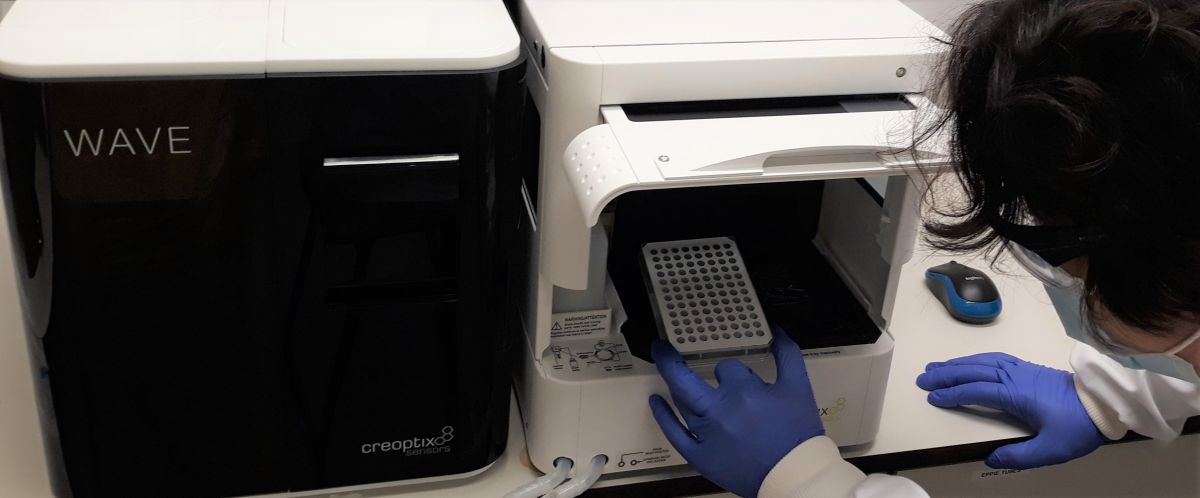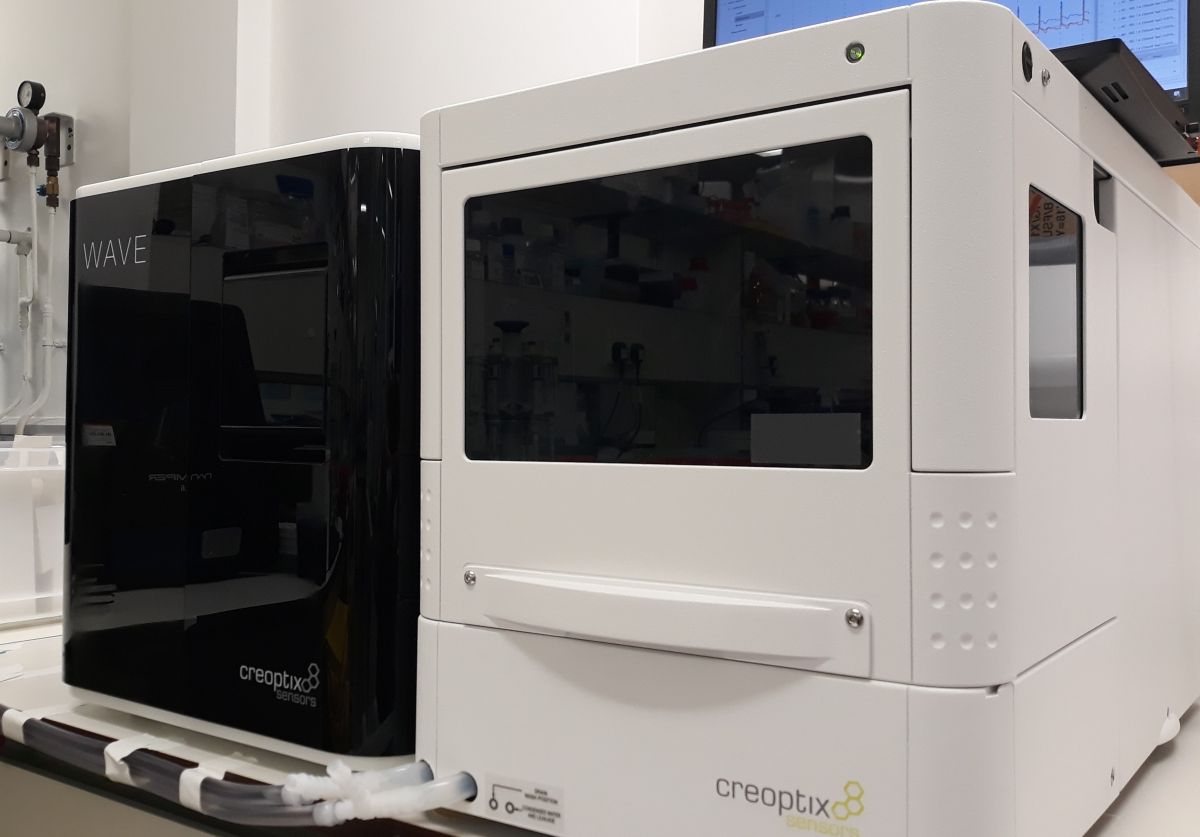- About
-
Solutions
-
Services
- Biosciences
- Chemistry
- Integrated Drug Discovery
- Computer Aided Drug Design
- Hit Identification
- Target Classes and Modalities
- Therapeutic Areas
-
A-Z
- A
- B
- C
- D
- E
- F
- G
- H
- I
- K
- L
- M
- N
- O
- P
- R
- S
- T
- V
- X
-
Services
- Library
- News & Events
- Careers
Ligand binding assays by Surface Plasmon Resonance (SPR) and/or Grating-Coupled Interferometry (GCI)
World leading ligand binding assay services from Domainex using the Creoptix WAVEdelta platform to measure bimolecular interactions
Domainex has invested in the Creoptix WAVEdelta platform which uses the biophysical technique of Grating-Coupled Interferometry (GCI). GCI is analogous to Surface Plasmon Resonance (SPR). In both techniques, the target protein is immobilised onto specialised sensor chips and the passage of analytes over the chip surface are monitored as time-dependent changes in refractive index, which can indicate bi-molecular interactions.
The technology
Changes in refractive index are obtained from mass changes near the sensor surface when a bi-molecular interaction occurs. Where GCI and SPR differ is that SPR detects a localised area of the chip surface whereas GCI samples the entire chip surface. GCI is therefore able to detect more binding events which enhances its sensitivity relative to SPR. Additionally, because the evanescent field does not penetrate as deep into the sample with GCI, there is less disturbance by bulk refractive index changes. GCI technology has proven application in fragment screening and to support subsequent hit-to-lead and lead optimisation stages of drug discovery. As the assay is label-free, homogenous, flow-based and kinetically read, it is ideally suited to measuring compound binding kinetics. The sensitivity and versatility of the WAVE system enables a wide variety of matrices to be used.
Innovative novel fluidics
The no-clog microfluids support large particles and are compatible with a wide variety of fluids such as:
- Crude reaction mixtures, high concentrations of DMSO and uncommon organic solvents
- 100% serum and plasma
- Cell supernatants
- Cell membrane preparations, PoLiPa/SMALP, nanodisc and detergent solubilised membrane proteins


Key advantages of the WAVEdelta system
- More sensitive than SPR
- Varied pulse duration to minimise cycle time (waveRAPID® technology), increase throughput and also to allow compound titrations in one run
- Extra channel opens up the possibility of running a reference or selectivity protein in parallel to the test protein as part of the same run
- Fast and accurate measurements of kinetic rates
- Accurate determination of dissociation rates of up to 10 sec-1 – useful for studying weak binders such as fragments
- “Clog-free” and therefore suitable for analysing plasma, serum and crude cell lysates
If you would like to access Domainex’s ligand binding assay services to support your programme of research, we would be delighted to hear from you.

Figure 1: a) waveRAPID kinetic data obtained using the Creoptix WAVEdelta system for G9a fragment hit, Frg331. A KD value of 499 µM was obtained. B) Microscale Thermophoresis (MST) data for the same fragment hit. A KD value of 460 µM was obtained using this technique.
Start your next project with Domainex
Contact one of our experts today